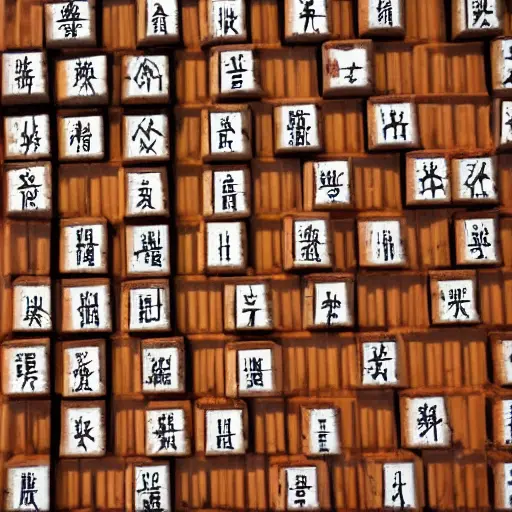Learn Chinese Character Components

Chinese character components are groups of strokes that make up a Chinese character. Learning them is a key to learning and remembering Chinese characters.
HanziHero is a Chinese character learning application that leverages spaced repetition and mnemonics to make learning Chinese characters as easy and efficient as possible. We use those same methods to help you learn hundreds of Chinese character components, too.
Let’s go in depth on what Chinese character components are, why they are useful to learn, and how HanziHero can help you learn and remember hundreds of them.
- What are character components?
- How character components help you learn Chinese characters
- Best way to learn character components
- Start learning character components with HanziHero today
What are character components?
Chinese character components are groups of strokes that make up Chinese characters. For example, the character 好 hǎo is composed of two components. On the left is 女 woman and on the right is 子 child.
Most characters have a couple of different components, as in the example above. A given component may be present in hundreds of different characters, or just a couple.
Difference between character components and character radicals
Some applications and courses talk of teaching “character radicals” instead of “character components”.
Chinese character radicals are character components that are specifically used for character indexing. Because of this, character radicals are sometimes referred to as indexing components.
For example, the radical for 好 is 女 woman. If we wanted to look up that character in a Chinese dictionary, it would be listed under the 女 woman radical. It is similar to how we look up “apple” under “a” in an English dictionary.
While there are hundreds and hundreds of character components, there are only about 200 character radicals. This arbitrary but standardized set of character radicals are also called Kangxi radicals.
At HanziHero, we teach over 500 character components. This set also includes the 200 or so character radicals as well.
How character components help you learn Chinese characters
Learning Chinese character components helps you with differentiating Chinese characters, aids in remembering Chinese characters via mnemonics, and can also serve as clues for the meaning or pronunciation of a Chinese character. Let’s go a bit more into each of these.
Character components help you differentiate Chinese characters
In order to read Chinese, you must be able to visually recognize each character you come across. Once you recognize the visual form of a character, you must then recall its meaning and pronunciation. If you can’t recognize the character, then you will not be able to pronounce it or recall its meaning!
By knowing each of the components, that visual recognition of characters and the differences between them is much easier. This is especially the case for characters that are quite similar. For example, the characters 右 yòu and 石 shí are quite visually similar, but have completely different meanings and pronunciations! Only by knowing the subtle differences between the components that make up these two characters will you be able to avoid mixing them up.
Character components help you remember Chinese characters
In order to reach literacy in Chinese, you must first learn over 3,000 Chinese characters. Each character consists of its pronunciation, its components, and its meaning.
Since each component has its own name, knowing all of the components in a character can help you remember the character itself. One can create a mnemonic story that weaves together the components, pronunciation, and meaning of a Chinese character.
In fact, this is our secret sauce at HanziHero. We have developed our own system of mnemonics that utilize the names of each components to create a story for each Chinese character.
Character components have meaning clues
Many of the components that make up a Chinese character provide a clue to its meaning or pronunciation. For example, if you see the component 女 woman within a character, that character’s meaning likely is in some way related to women generally.
As you learn more and more components and the characters they show up in, you will begin to recognize these patterns. You even may be able to correctly derive the meaning of a character you have never seen before, just by recognizing all of the components contained within it.
Best way to learn character components
Now that we know the utility of learning character components, let’s look at what we do at HanziHero to make learning them as easy and efficient as possible.
Prioritize learning the more common ones
There are hundreds and hundreds of components, some of which are rarely used at all. It is not feasible to learn all of the components first, then move onto learning the characters themselves. Instead, one should first learn the most commonly used ones, and afterwards learn the more specialized or esoteric ones.
At HanziHero, we’ve analyzed thousands of Chinese characters and their components and developed our own optimum learning order to learn them in. We teach the most common components used in the most common characters first, helping you to quickly begin to recognize components that show up in everyday Chinese text!
Create mnemonics for each
There are hundreds of components, each with their own visual form and name. In fact, some of those components are composed of other components, too!
One great way to remember each component is to create a mnemonic story for each. This story can leverage the name or look of a character to help it stick in your head.
A simple example mnemonic is to observe that 女 woman actually looks like a woman! There is a head at the top, two arms to each side, a bosom, and two legs.
At HanziHero, we believe mnemonics are the key to learning Chinese components and characters. We have handmade mnemonics for hundreds of components. These are the same mnemonics we used ourselves to learn and remember components as we learned Chinese, so we know they work!
Learn alongside the characters they are used in
Learning components by themselves is not very useful. Most of the utility of components comes in how they help you better understand characters. For this reason, it is important to primarily learn components that are actually used in characters you are learning or plan to learn.
At HanziHero, we teach components alongside characters and words they are present in. After you learn each component, we immediately begin teaching you a couple of characters that include that same component. This helps you build more connections in your brain related to the component, which in turn makes it easier to remember.
Review regularly
The hardest part about components is not learning them, but remembering what you learned. Some of them look so similar that you may mix them up, without knowing you did! It is important to go back through the ones you learned and double check that you correctly remember them.
We built our own spaced repetition review system for HanziHero that will give you some components each day to review. You are given a component and must type in its name to pass, ensuring you remember it correctly. Because our review system uses spaced repetition, it will only have you review components you haven’t reviewed in a while, or ones you consistently get incorrect.
Start learning character components with HanziHero today
Learning character components is an essential part of learning Chinese, and HanziHero has all of the tools and methods to make learning them as easy and efficient as possible.
Best of all, HanziHero has a comprehensive free tier, allowing you to try it out and evaluate it at your own pace, no credit card required.
Ready to start learning Chinese components? Create an account and give it a try!
